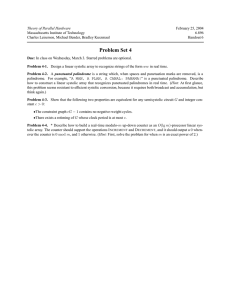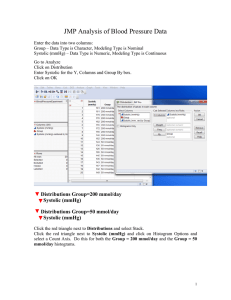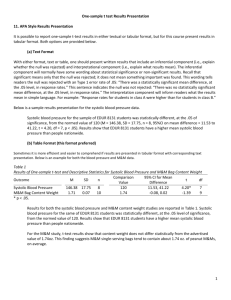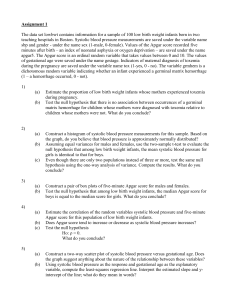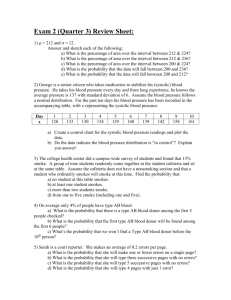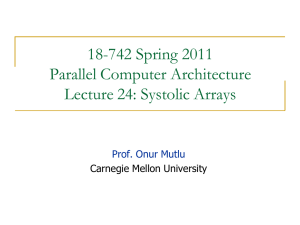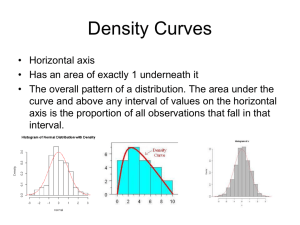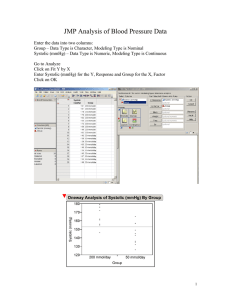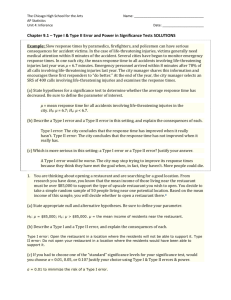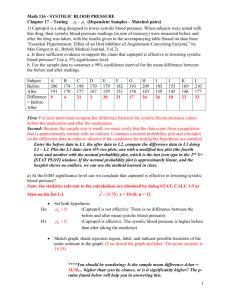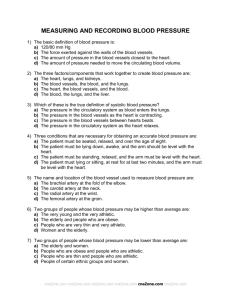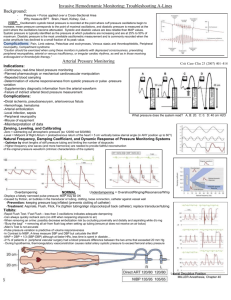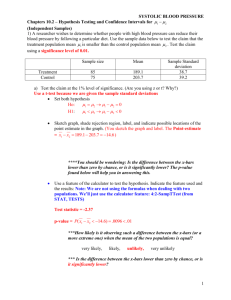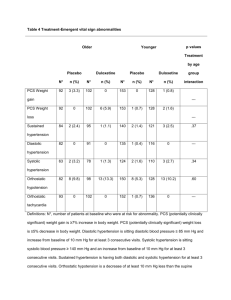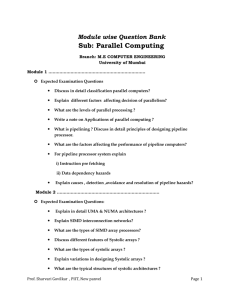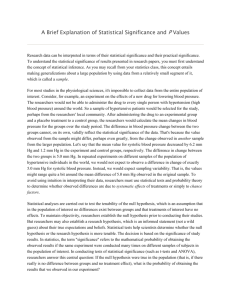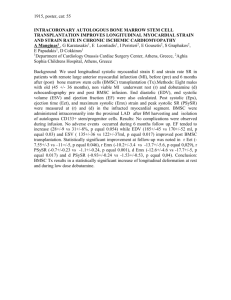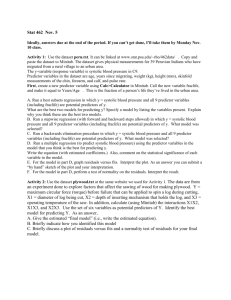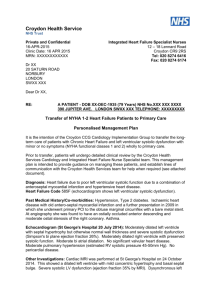Type I error, Type II error and Power
advertisement
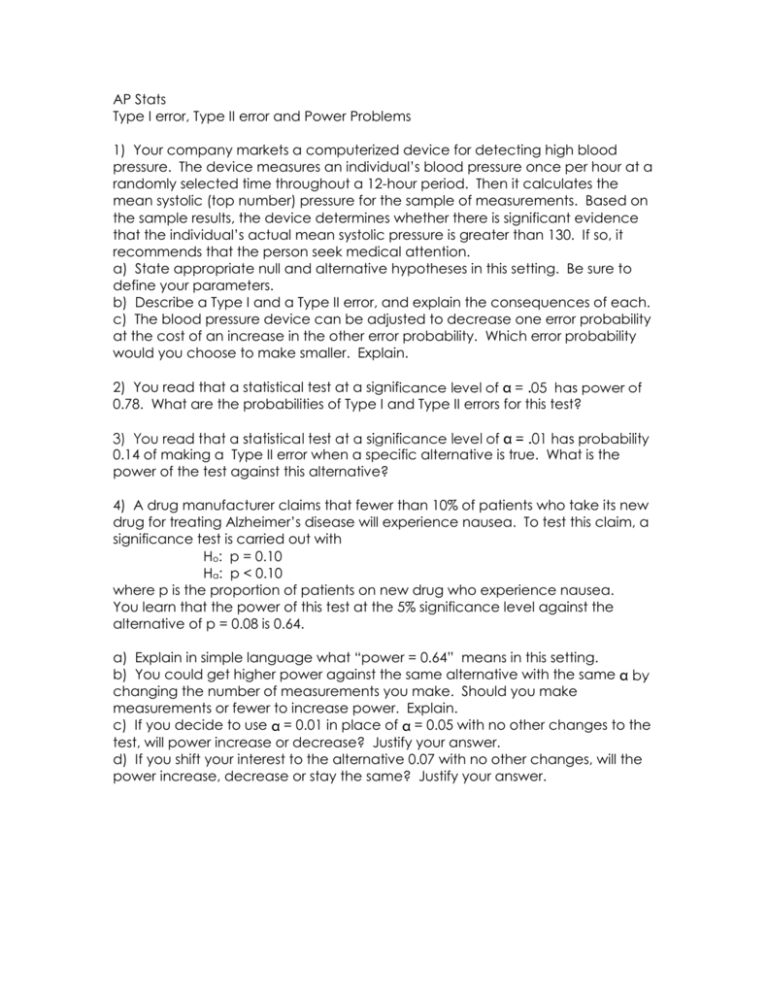
AP Stats Type I error, Type II error and Power Problems 1) Your company markets a computerized device for detecting high blood pressure. The device measures an individual’s blood pressure once per hour at a randomly selected time throughout a 12-hour period. Then it calculates the mean systolic (top number) pressure for the sample of measurements. Based on the sample results, the device determines whether there is significant evidence that the individual’s actual mean systolic pressure is greater than 130. If so, it recommends that the person seek medical attention. a) State appropriate null and alternative hypotheses in this setting. Be sure to define your parameters. b) Describe a Type I and a Type II error, and explain the consequences of each. c) The blood pressure device can be adjusted to decrease one error probability at the cost of an increase in the other error probability. Which error probability would you choose to make smaller. Explain. 2) You read that a statistical test at a signif 0.78. What are the probabilities of Type I and Type II errors for this test? 0.14 of making a Type II error when a specific alternative is true. What is the power of the test against this alternative? 4) A drug manufacturer claims that fewer than 10% of patients who take its new drug for treating Alzheimer’s disease will experience nausea. To test this claim, a significance test is carried out with Ho: p = 0.10 Ha: p < 0.10 where p is the proportion of patients on new drug who experience nausea. You learn that the power of this test at the 5% significance level against the alternative of p = 0.08 is 0.64. a) Explain in simple language what “power = 0.64” means in this setting. b) You could get higher power against the same alternative with the same changing the number of measurements you make. Should you make measurements or fewer to increase power. Explain. c) If you decide to use = 0.01 in place of = 0.05 with no other changes to the test, will power increase or decrease? Justify your answer. d) If you shift your interest to the alternative 0.07 with no other changes, will the power increase, decrease or stay the same? Justify your answer. Answers 1a) is the mean systolic blood pressure for an individual Ho: = 130 Ha: > 130 1b) Type I error: tell an individual that they have high systolic blood pressure when in fact they do not. Type II error: fail to tell someone they have high systolic blood pressure when they do. 1c) A type II error is worse as high blood pressure, if it goes undiagnosed, can cause serious health risks, so it would be best to minimize this probability. 2) Type I error probability is 0.05 and Type II error probability is 1 – 0.78 = 0.22 3) Power = 1 – 0.14 = .86 4a) If the true proportion p = 0.08 then the test has a .64 probability of rejecting (correctly) the null hypothesis. 4b) By taking more samples, as the standard deviation of the sampling distribution would get smaller, making the probability of failing to reject smaller and power therefore bigger. 4c) The power would decrease. The fail to reject region gets bigger with a smaller alpha, thus the power gets smaller. 4d) The power will increase as you have gone even further to the right outside of the fail to reject region, thus increasing the power.

